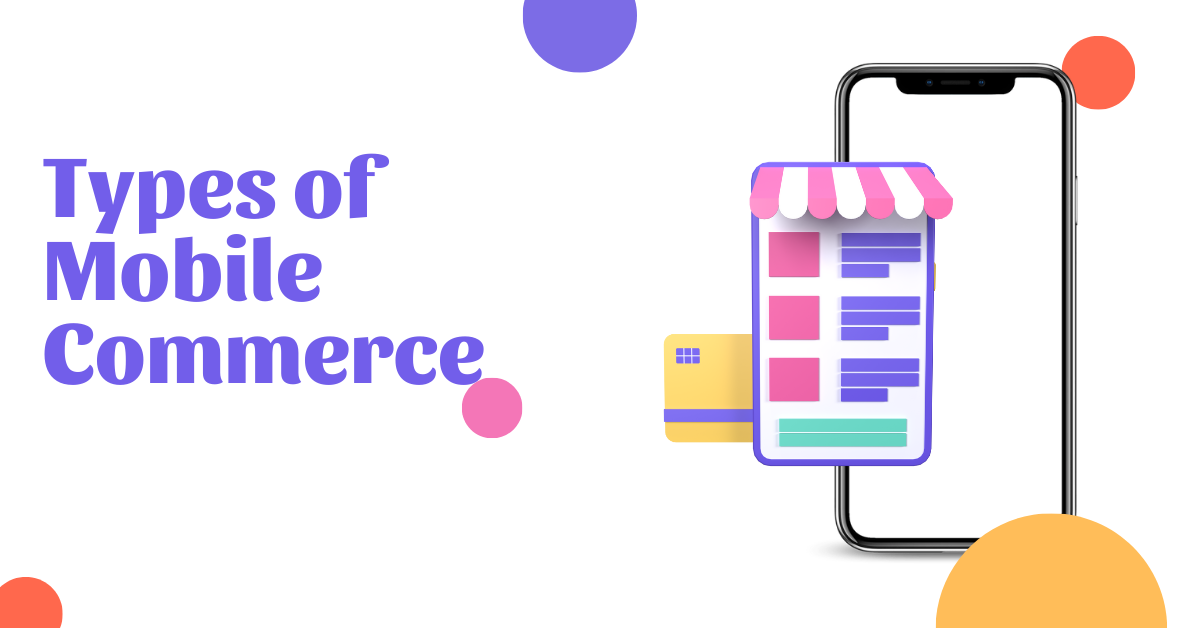Types of Mobile Commerce: How M-Commerce is Transforming Businesses

Mobile commerce (m-commerce) represents a pivotal transformation in digital transactions, encompassing all commercial activities conducted via mobile devices such as smartphones, tablets, and wearable technology.
As a critical subset of e-commerce, m-commerce has experienced exponential growth due to the ubiquity of mobile connectivity and the increasing sophistication of mobile applications.
The following sections provide a comprehensive analysis of the various forms of m-commerce, delineating their features, functional mechanisms, and implications for businesses and consumers.
1. Mobile Shopping
Mobile shopping constitutes the most dominant category of m-commerce, enabling consumers to engage in online retail transactions through dedicated mobile applications and optimized websites.
Core Features:
- User-Centric Interface: Enhanced browsing experiences, price comparisons, and customer reviews facilitate informed decision-making.
- Application Ecosystem: Proprietary mobile applications enhance consumer engagement and provide exclusive promotional incentives.
- Social Commerce Integration: Platforms such as Instagram and Facebook incorporate embedded purchasing functionalities, streamlining transactions within social networking environments.
Illustrative Cases:
- E-commerce giants such as Amazon and Flipkart exemplify seamless mobile shopping ecosystems.
- SHEIN’s application leverages algorithm-driven personalization and targeted discounts to optimize user retention and engagement.
Advantages:
- Unparalleled Accessibility: Consumers can execute transactions ubiquitously, eliminating geographical constraints.
- Algorithmic Personalization: AI-driven recommendations enhance the consumer shopping experience.
Challenges:
- Cybersecurity vulnerabilities associated with financial transactions.
- Suboptimal user experiences due to inefficient application design and latency issues.
2. Mobile Banking
Mobile banking has revolutionized financial services by facilitating real-time account management and transactional capabilities through digital platforms.
Key Functionalities:
- Comprehensive Account Access: Users can execute fund transfers, bill payments, and check deposits remotely.
- Digital-First Financial Institutions: Neobanks such as Revolut and N26 operate exclusively within mobile environments, redefining traditional banking paradigms.
- Advanced Security Protocols: Biometric authentication and machine learning-driven fraud detection fortify transactional integrity.
Representative Examples:
- State Bank of India’s YONO app consolidates multiple banking services within a unified mobile interface.
- Capital One employs AI-enhanced fraud mitigation techniques and predictive analytics for user-centric financial management.
Benefits:
- Democratized Financial Access: Consumers benefit from reduced dependency on physical banking infrastructure.
- Expedited Transactions: Digital banking accelerates financial operations, enhancing efficiency.
Challenges:
- Network dependency affecting service availability.
- Escalating cybersecurity threats necessitate continuous innovation in data protection mechanisms.
3. Mobile Payments
Mobile payment systems facilitate financial transactions through digital wallets, near-field communication (NFC) technologies, and peer-to-peer payment applications.
Defining Attributes:
- Contactless Payment Infrastructure: NFC-based systems enable instantaneous transactions via mobile devices.
- Seamless Peer-to-Peer Transactions: Platforms such as Venmo and PayPal simplify monetary exchanges between individuals.
- Wearable Technology Integration: Smartwatches and IoT devices incorporate payment functionalities for enhanced transactional convenience.
Notable Implementations:
- Google Pay functions as a comprehensive digital wallet, integrating loyalty cards and secure transactions.
- Samsung Wallet incentivizes usage through reward accumulation and exclusive promotional offers.
Advantages:
- Elimination of Physical Currency: Digital transactions streamline the payment process, reducing dependency on cash and cards.
- Transaction Efficiency: Mobile payments optimize checkout processes through instantaneous authorization mechanisms.
Challenges:
- Regional disparities in mobile payment adoption.
- Privacy concerns regarding data aggregation and potential misuse.
4. Mobile Ticketing
Mobile ticketing systems facilitate the acquisition, storage, and utilization of tickets for events, travel, and entertainment via digital platforms.
Core Functionalities:
- Digital Ticketing Repositories: Users can access and store tickets directly within their mobile devices.
- QR Code-Enabled Authentication: Scannable QR codes expedite venue entry and transportation boarding.
- Integrated Booking Platforms: Applications consolidate ticket purchasing and management within a singular interface.
Illustrative Applications:
- Airlines provide digital boarding passes to enhance passenger convenience.
- Event management platforms, such as Eventbrite, enable frictionless ticket sales and distribution.
Advantages:
- Sustainability Considerations: Digital ticketing minimizes paper waste, promoting environmentally responsible consumption.
- Enhanced User Convenience: Users benefit from streamlined access to digital tickets, reducing risks associated with loss or misplacement.
Challenges:
- Device dependency introduces risks related to battery depletion and technical malfunctions.
- Limited infrastructure in certain regions impedes widespread adoption.
5. Mobile Coupons and Loyalty Programs
Mobile commerce leverages digital discounting mechanisms and loyalty incentives to foster consumer engagement and retention.
Principal Features:
- Push Notification Systems: Real-time promotional alerts enhance consumer awareness and participation.
- Personalized Reward Structures: AI-driven analytics enable targeted discounting based on user behavior.
- Application-Based Coupon Integration: Retail applications embed digital coupons within purchasing workflows to optimize redemption.
Prominent Use Cases:
- Major retailers deploy mobile applications to distribute time-sensitive discounts and promotional vouchers.
Advantages:
- Enhanced Consumer Engagement: Loyalty incentives cultivate brand affinity and encourage repeat purchases.
Challenges:
- Overexposure to promotional notifications may contribute to consumer desensitization.
Emerging Paradigms in Mobile Commerce
The ongoing evolution of m-commerce is underpinned by transformative technological innovations:
- Voice-Activated Transactions: AI-powered virtual assistants (e.g., Siri, Alexa) facilitate hands-free purchasing experiences.
- Augmented Reality (AR) Integration: AR technologies enable immersive product visualization, enhancing pre-purchase evaluations.
- Decentralized Financial Technologies: Blockchain applications reinforce transactional security through cryptographic encryption and distributed ledger protocols.
Conclusion
The multifaceted landscape of mobile commerce, encompassing domains such as mobile shopping, banking, payments, ticketing, and loyalty programs, underscores its integral role in contemporary digital economies.
With increasing global smartphone penetration, enterprises must adopt adaptive m-commerce strategies to sustain competitive advantage.
Addressing cybersecurity challenges, optimizing user-centric designs, and harnessing emergent technologies such as AR and blockchain will be paramount in shaping the trajectory of future mobile commerce ecosystems.